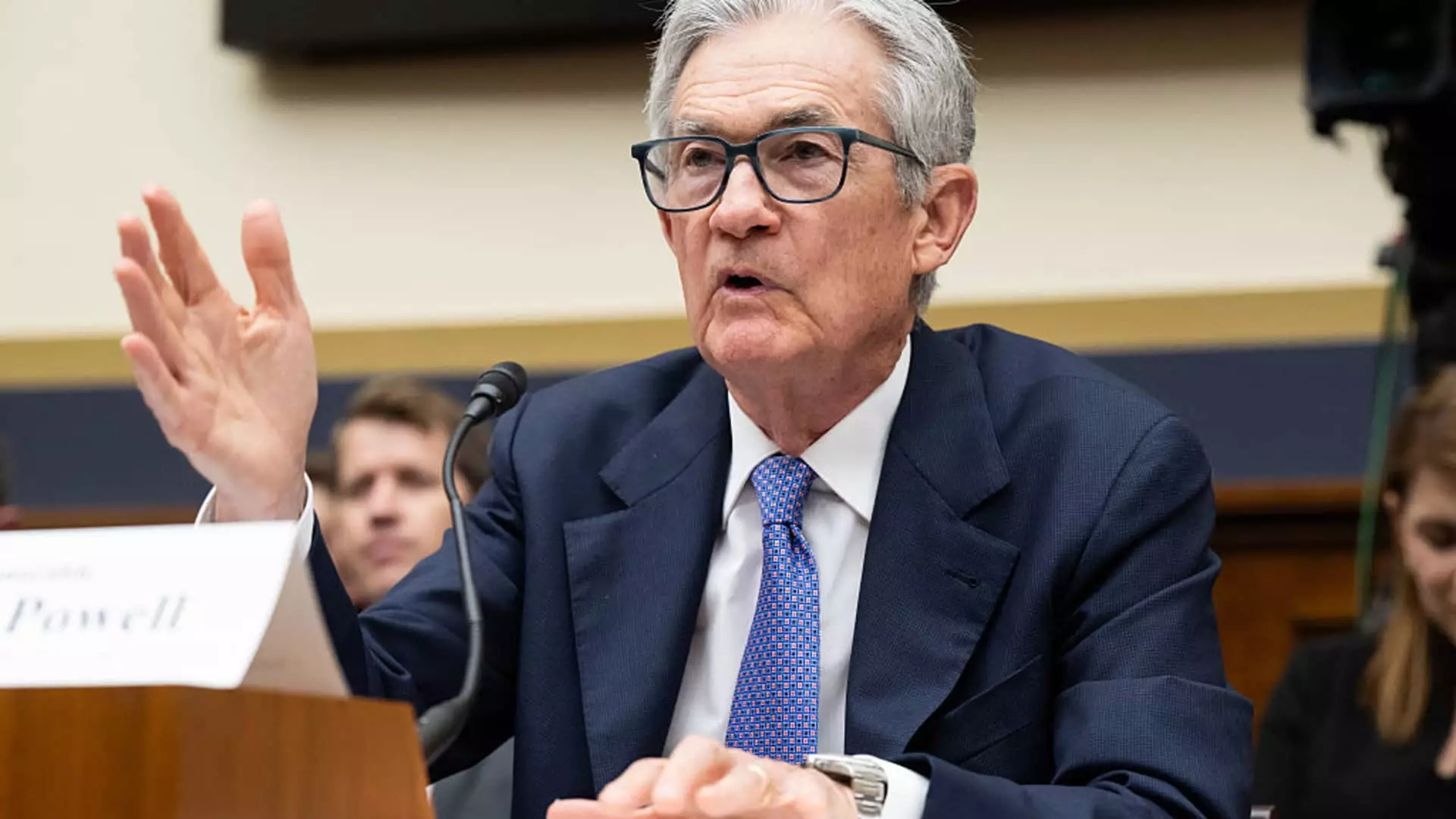In a world fraught with economic uncertainties, Federal Reserve Chair Jerome Powell’s recent remarks reflect a tempered yet deliberate strategy of restraint. As Powell articulated before Congressional committees, the central bank appears steadfast in its primary goal—to rein in inflation. The unsettling truth looms: despite what he labels as “strong” economic growth and a labor market nearing full employment, inflation has stubbornly surpassed the Fed’s 2% target. It’s a scenario that raises eyebrows and challenges the narrative of a robust economic recovery. The Fed’s failure to decisively address rising prices indicates a delicate balancing act that could potentially harm everyday Americans.
What Powell doesn’t fully acknowledge is that waiting may lead to missed opportunities. The ongoing trade tensions, primarily due to President Donald Trump’s tariffs, cast a long shadow over any recovery efforts. Powell’s insistence on holding back adjustments until he has a firmer grasp on the tariff-related impacts reflects a central bank gripped by indecision. It’s notable that while he calls for caution—consistently reiterating the necessity for more data—it can also be interpreted as a reluctance to make bold moves that could rejuvenate a faltering economy.
The Tariff Dilemma: Short-Term Pain or Long-Term Gain?
The question that every American should consider is how tariffs are truly affecting prices. Historically, tariffs have led to immediate price surges but have rarely instigated prolonged inflation. This perspective is crucial; however, Powell appears almost handcuffed by the prevailing economic conditions. In his statements, he stated, “We’re just trying to be careful and cautious.” While his approach may seem prudent, it raises concerns about the very essence of leadership during turbulent times.
What stands out is the multiplicity of opinions within the Federal Open Market Committee (FOMC). The division in the so-called “dot plot” underscores the widening rift among policymakers. With some favoring minimal cuts while others advocate for more aggressive adjustments, it becomes apparent that clarity is lacking within the Federal Reserve itself. The internal disagreements shouldn’t be minimized; they expose a leadership vacuum that could hinder essential policy decisions when most needed.
Moreover, this predicament is compounded by the heightened politicization of the Federal Reserve. Trump’s relentless criticism of Powell, labeling him as “dumb” and “hardheaded,” lingers in the air. Powell’s dismissal of political pressure suggests a steadfast independence, but the reality is more complex. When a sitting president engages so openly in hostility against a key economic institution, it can introduce an unspoken tension that impacts public confidence and market perceptions. While Powell may assert that politics has no influence on their work, the skepticism surrounding these claims is palpable.
Inflation Metrics: The Volatile Reality
Digging deeper into the inflation metrics, Powell’s projection that inflation will rise to 2.3% by May raises numerous red flags. Coupled with an anticipated increase in core inflation nearing 2.6%, it casts doubt on the Fed’s ability to maintain price stability while navigating external pressures. Admittedly, a 0.1% rise in the consumer price index in May aligns with Powell’s outlook—but it also hints at the fragility that encompasses these figures.
Policymakers must weigh the immediate impacts of tariffs against a longer-term vision for economic stability. The reality is that prolonged inflation should not be merely tolerated in favor of a temporary political agenda. By emphasizing price stability, Powell and the FOMC must also contend with the broader implications for labor markets; without a cohesive income growth strategy, a strong labor market could be adversely affected. The stark truth is that low inflation is critical for ensuring a viable path to sustainable employment and economic health.
The Way Forward: Navigating Uncertainties with Conviction
As the FOMC stands united in holding rates steady, the crucial task now is to sift through the noise and align on a concrete path forward. The gradual approach of gathering data before any cuts might appeal to some, yet it could also mean passing up opportunities for mitigating economic strains. With only a 23% chance of a rate change in the upcoming July meeting—per CME Group’s FedWatch gauge—the stakes are high. The specter of indecision looms, while American families watch closely, caught between a stabilizing economy and inflationary pressures that seem to defy the odds.
Moving forward, the Federal Reserve must transcend mere cautiousness and embark on a more proactive fiscal strategy. The path may be strewn with obstacles wrought by tariffs and political barbs, yet a commitment to genuine economic stability is paramount. For a central bank that has long held sway over monetary policy, the time for decisive action is now—or risk being viewed as complacent amid an ever-evolving economic landscape.

